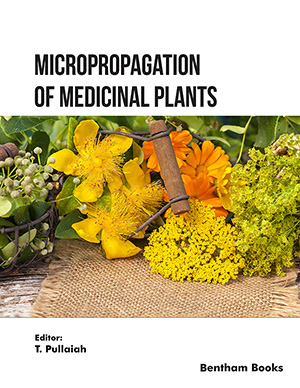Abstract
Background: Diabetes is a major global health concern, manifesting the symptoms of chronic hyperglycemia. Either insufficient or excessive angiogenesis is generally involved in the pathogenesis of diabetes and its complications.
Objective: Given that macronutrients are important dietary players in global health issues, we aimed to review the role of macronutrients, including carbohydrates and proteins, to manage diabetes via angiogenesis modulation.
Methods: Sixteen studies regarding the effects of macronutrients, including carbohydrates and proteins derived from plants, fungus, bacteria, and their derivatives, on angiogenesis in diabetes were included in our study.
Results: Reviewing these studies suggests that carbohydrates, including low molecular weight fucoidan (LMWF), Astragalus polysaccharide (APS), and Ganoderma lucidum polysaccharide (Gl-PS), as well as oligopeptides, like sea cucumber-isolated small molecule oligopeptides (SCCOPs), can induce angiogenesis in the process of wound healing. Considering retinopathy, carbohydrates, including Diphlorethohydroxycarmalol (DPHC), Lyciumbarbarum (LBP), Sulfated K5 Escherichia coli polysaccharide (K5-N, OS (H)), and carnosine suppressed retinal angiogenesis. Furthermore, rice bran protein (RBP) ameliorated angiogenesis in diabetic nephropathy. Carbohydrates, including DPHC, Anoectochilus roxburghii polysaccharide (ARP), and LMWF, showed beneficial effects on endothelial cell dysfunction.
Conclusion: In conclusion, data suggest that a number of macronutrients, including proteins and carbohydrates, could have protective effects against complications of diabetes via modulation of angiogenesis.
Keywords: Diabetes, macronutrient, carbohydrate, protein, angiogenesis, complications.
[http://dx.doi.org/10.1016/j.diabres.2017.03.024] [PMID: 28437734]
[http://dx.doi.org/10.1016/S0140-6736(11)60679-X] [PMID: 21705069]
[http://dx.doi.org/10.1016/S0140-6736(13)62219-9] [PMID: 24315621]
[http://dx.doi.org/10.1056/NEJM199306103282306] [PMID: 8487827]
[http://dx.doi.org/10.1016/S2213-8587(13)70025-1] [PMID: 24622269]
[http://dx.doi.org/10.1242/dev.062323] [PMID: 21965610]
[http://dx.doi.org/10.1002/1097-0185(20000615)261:3<126::AID-AR7>3.0.CO;2-4] [PMID: 10867630]
[http://dx.doi.org/10.1002/med.10024] [PMID: 12500286]
[http://dx.doi.org/10.1161/01.CIR.0000027109.14149.67] [PMID: 12186805]
[http://dx.doi.org/10.1016/S1567-5688(03)00034-5] [PMID: 14664903]
[http://dx.doi.org/10.1161/01.ATV.20.3.659] [PMID: 10712388]
[http://dx.doi.org/10.1155/2013/184539]
[http://dx.doi.org/10.1161/CIRCULATIONAHA.110.003855]
[http://dx.doi.org/10.1016/j.carbpol.2016.02.060] [PMID: 27185119]
[http://dx.doi.org/10.2174/1566524020999210101234317] [PMID: 33397259]
[http://dx.doi.org/10.1016/j.ctim.2013.11.007] [PMID: 24559825]
[http://dx.doi.org/10.2337/dc14-S120] [PMID: 24357208]
[http://dx.doi.org/10.1900/RDS.2016.13.6] [PMID: 27563693]
[http://dx.doi.org/10.1016/j.ijbiomac.2018.10.072] [PMID: 30342938]
[http://dx.doi.org/10.1016/j.jep.2017.03.012] [PMID: 28286103]
[http://dx.doi.org/10.1155/2018/7943212]
[http://dx.doi.org/10.1007/s00394-016-1366-y] [PMID: 28004272]
[http://dx.doi.org/10.3390/md16010016] [PMID: 29316680]
[http://dx.doi.org/10.1042/BST0371167]
[http://dx.doi.org/10.1128/MCB.00192-09] [PMID: 19546236]
[http://dx.doi.org/10.1016/j.tem.2010.01.009] [PMID: 20223680]
[http://dx.doi.org/10.1172/JCI45887] [PMID: 21633177]
[http://dx.doi.org/10.1073/pnas.101564798] [PMID: 11344271]
[http://dx.doi.org/10.2337/dc12-0638] [PMID: 22996180]
[http://dx.doi.org/10.1016/j.cmet.2008.11.009] [PMID: 19117550]
[http://dx.doi.org/10.1002/mnfr.201500714] [PMID: 26750093]
[http://dx.doi.org/10.1038/s41598-017-01730-3] [PMID: 28490763]
[http://dx.doi.org/10.1007/s11892-005-0019-y] [PMID: 16033674]
[http://dx.doi.org/10.1074/jbc.M310389200] [PMID: 14557259]
[http://dx.doi.org/10.1016/j.rvsc.2005.05.011] [PMID: 16051287]
[http://dx.doi.org/10.1172/JCI113088] [PMID: 3301899]
[http://dx.doi.org/10.2337/db14-1771] [PMID: 26068543]
[http://dx.doi.org/10.1152/japplphysiol.00353.2004] [PMID: 15298982]
[http://dx.doi.org/10.1161/01.CIR.95.6.1366] [PMID: 9118501]
[http://dx.doi.org/10.1161/01.CIR.99.17.2239] [PMID: 10226087]
[http://dx.doi.org/10.2337/db11-0400] [PMID: 21709280]
[http://dx.doi.org/10.1210/jc.2006-0624] [PMID: 16849402]
[http://dx.doi.org/10.1038/eye.2009.157] [PMID: 19557019]
[http://dx.doi.org/10.1006/bbrc.2001.6138] [PMID: 11779150]
[http://dx.doi.org/10.1152/ajpendo.00223.2007] [PMID: 17711990]
[http://dx.doi.org/10.1186/1755-1536-5-13] [PMID: 22853690]
[http://dx.doi.org/10.1016/S0006-291X(03)01064-7] [PMID: 12810080]
[http://dx.doi.org/10.3892/mmr.2016.5821] [PMID: 27748921]
[http://dx.doi.org/10.2337/diacare.27.12.2843] [PMID: 15562195]
[http://dx.doi.org/10.1161/01.RES.0000232352.90786.fa] [PMID: 16778129]
[http://dx.doi.org/10.1172/JCI32169] [PMID: 17476353]
[http://dx.doi.org/10.1016/S0140-6736(05)67700-8] [PMID: 16291068]
[http://dx.doi.org/10.1161/CIRCRESAHA.110.223545] [PMID: 21030723]
[http://dx.doi.org/10.1021/pr100456d] [PMID: 20666496]
[http://dx.doi.org/10.1016/j.jvs.2008.11.049] [PMID: 19341889]
[http://dx.doi.org/10.1016/j.legalmed.2013.10.002] [PMID: 24269074]
[http://dx.doi.org/10.1161/01.CIR.102.2.185] [PMID: 10889129]
[http://dx.doi.org/10.1161/CIRCULATIONAHA.108.817528] [PMID: 19564559]
[http://dx.doi.org/10.1161/CIRCRESAHA.108.181115] [PMID: 18802023]
[http://dx.doi.org/10.1210/er.2003-0027] [PMID: 15294883]
[http://dx.doi.org/10.1016/j.jacc.2005.06.007] [PMID: 16139132]
[PMID: 9162436]
[http://dx.doi.org/10.1023/B:MCBI.0000044378.09409.b5] [PMID: 15544038]
[http://dx.doi.org/10.1080/15287394.2018.1440185] [PMID: 29473788]
[http://dx.doi.org/10.1016/j.preteyeres.2011.06.002] [PMID: 21704180]
[http://dx.doi.org/10.1096/fj.04-3621fje] [PMID: 16049136]
[http://dx.doi.org/10.1046/j.1365-2362.2003.01245.x] [PMID: 14511361]
[http://dx.doi.org/10.2337/diabetes.53.4.1104] [PMID: 15047628]
[http://dx.doi.org/10.1007/s00592-009-0099-2] [PMID: 19238311]
[http://dx.doi.org/10.1002/jcp.21558] [PMID: 18720385]
[http://dx.doi.org/10.1074/jbc.274.22.15732] [PMID: 10336473]
[http://dx.doi.org/10.1038/35008121] [PMID: 10783895]
[http://dx.doi.org/10.1016/S0021-9150(03)00140-0] [PMID: 12801609]
[http://dx.doi.org/10.1002/jcb.21192] [PMID: 17203468]
[http://dx.doi.org/10.2174/157339913804143207] [PMID: 23167665]
[http://dx.doi.org/10.1016/j.lfs.2013.04.001] [PMID: 23603139]
[http://dx.doi.org/10.2337/dc12-1125] [PMID: 22991450]
[http://dx.doi.org/10.1097/01.ASN.0000093460.24823.5B] [PMID: 14684674]
[http://dx.doi.org/10.1111/j.1523-1755.2004.00393.x] [PMID: 14675037]
[http://dx.doi.org/10.7150/ijbs.7.1056] [PMID: 21927575]
[http://dx.doi.org/10.1016/j.yjmcc.2008.10.007] [PMID: 19007787]
[http://dx.doi.org/10.1016/j.bbagrm.2014.06.018] [PMID: 25046864]
[http://dx.doi.org/10.1159/000369576] [PMID: 25852733]
[http://dx.doi.org/10.1080/10623320214733] [PMID: 12572854]
[http://dx.doi.org/10.1001/archopht.1989.01070010276036] [PMID: 2521787]
[http://dx.doi.org/10.1016/j.preteyeres.2011.05.002] [PMID: 21635964]
[http://dx.doi.org/10.1002/jcp.24133] [PMID: 22717959]
[http://dx.doi.org/10.1002/dmrr.432] [PMID: 15037985]
[http://dx.doi.org/10.2337/diacare.26.9.2653] [PMID: 12941734]
[http://dx.doi.org/10.1074/jbc.M602110200] [PMID: 16707486]
[http://dx.doi.org/10.1038/nature04482] [PMID: 16355161]
[http://dx.doi.org/10.2174/157339906775473671] [PMID: 18220619]
[http://dx.doi.org/10.1007/s10456-007-9068-y] [PMID: 17372850]
[http://dx.doi.org/10.1007/s11892-012-0289-0] [PMID: 22638940]
[http://dx.doi.org/10.1006/exer.2002.1170] [PMID: 12076083]
[http://dx.doi.org/10.2337/diabetes.50.8.1938] [PMID: 11473058]
[http://dx.doi.org/10.1038/sj.ejcn.1602936] [PMID: 17992187]
[http://dx.doi.org/10.1201/9780203504932]
[http://dx.doi.org/10.1007/s11010-009-0199-x] [PMID: 19585224]
[http://dx.doi.org/10.1186/s12933-016-0342-4] [PMID: 26822858]
[http://dx.doi.org/10.1093/glycob/cwm014] [PMID: 17296677]
[http://dx.doi.org/10.1111/1753-0407.12667] [PMID: 29633569]
[http://dx.doi.org/10.3390/md16100375] [PMID: 30308943]
[http://dx.doi.org/10.1093/cvr/cvp242] [PMID: 19617223]
[http://dx.doi.org/10.1124/jpet.102.046144] [PMID: 12649349]
[http://dx.doi.org/10.1016/j.jep.2017.09.014] [PMID: 28917976]
[http://dx.doi.org/10.2337/db15-1668] [PMID: 27284113]
[PMID: 21355300]
[http://dx.doi.org/10.1038/aps.2013.46] [PMID: 23728723]
[PMID: 22928154]
[PMID: 24890165]
[http://dx.doi.org/10.2174/138920109789978757] [PMID: 19939212]
[http://dx.doi.org/10.1016/j.jep.2010.06.023] [PMID: 20600765]
[http://dx.doi.org/10.1111/j.1471-4159.2006.04179.x] [PMID: 17227439]
[http://dx.doi.org/10.1159/000338512] [PMID: 22508065]
[http://dx.doi.org/10.1007/BF02644769] [PMID: 8739851]
[http://dx.doi.org/10.1111/j.1432-1033.1981.tb05343.x] [PMID: 7018909]
[http://dx.doi.org/10.2337/db14-1378] [PMID: 25695948]
[http://dx.doi.org/10.1024/0300-9831/a000059] [PMID: 22139563]
[http://dx.doi.org/10.1007/s00394-012-0385-6] [PMID: 22661284]
[http://dx.doi.org/10.1038/ki.2008.128] [PMID: 18418356]
[http://dx.doi.org/10.1039/C5FO01480H] [PMID: 26838796]
[http://dx.doi.org/10.1007/s11626-014-9862-y] [PMID: 25636237]
[http://dx.doi.org/10.1016/j.cbpc.2003.10.008] [PMID: 14698913]
[http://dx.doi.org/10.1111/j.1749-6632.2002.tb02100.x] [PMID: 11976203]
[http://dx.doi.org/10.1074/jbc.M209764200] [PMID: 12473676]
[http://dx.doi.org/10.1159/000331721] [PMID: 21865855]
[http://dx.doi.org/10.1167/iovs.06-0647] [PMID: 17122149]






























